There’s an eternal debate that’s been heating up in UK homes: electric underfloor heating vs radiators. Which one takes the crown for the most efficient, cost-effective, and comfortable home heating solution? Well, you’re in luck. Today, we’re going to dive into the nitty-gritty of these two popular heating systems, comparing them head-to-head on various parameters. Grab a cuppa and join us as we untangle this hot debate to help you find the perfect heating solution for your cosy abode.
What Is Electric Underfloor Heating?
Electric underfloor heating is a modern heating solution that gently warms your home from the ground up. The system involves a network of electric wires or heating mats that are laid beneath your floor surface. These elements warm up when electric current passes through them, heating the floor above, which then radiates this heat into the room. There are two main types of electric underfloor heating systems: loose-fit wiring, ideal for irregular or awkward-shaped rooms, and heating mats, which are typically used in larger, straightforward spaces.
Underfloor Heating Pros
Even Heat Distribution: One of the major advantages of electric underfloor heating is its ability to evenly distribute heat across the room. This can eliminate the cold spots that are often found in rooms heated by radiators.
Space Saving: As the entire system is installed beneath the floor, it doesn’t take up any wall space. This gives you more freedom when it comes to placing furniture and designing your room layout.
Low Maintenance: Once installed, electric underfloor heating requires virtually no maintenance, making it a hassle-free heating solution for the long term.
Energy Efficiency: As underfloor heating systems use less energy than radiant heat, they can run at lower temperatures than radiators while still achieving a comfortable room temperature, potentially reducing energy usage and your energy bills.
Underfloor Heating Cons
Installation Cost: Electric underfloor heating systems are expensive to install, especially in larger areas or existing homes, as it often involves raising the floor level.
Slow Heat Up Time: Unlike radiators which can quickly heat up, underfloor heating systems can take a while to reach the desired temperature. This might require you to leave the heating on for longer periods, potentially impacting your energy bills.
Flooring Restrictions: Not all types of floor coverings are suitable for underfloor heating. While tiles and stone are excellent conductors of heat, some types of wood or vinyl flooring may not be suitable for fitting underfloor heating due to potential damage from the heat.
Difficult to Retrofit: If you’re thinking about adding underfloor heating to an existing room, you might be faced with a significant project. It can require removing the current floor, installing the heating system, and then reinstalling a floor covering – a potentially time-consuming and expensive process.
So, while underfloor heating can be a great solution for some, it’s essential to consider these pros and cons carefully before deciding if it’s right for you.
What Is A Radiator?
A radiator is a time-tested heating solution, a staple in most UK homes for a good reason. It’s a heat exchanger designed to transfer thermal energy from one medium to another to provide heating. In the case of radiators, they work by heating water (for central heating systems) or oil (for electric radiators), which then warms up the surrounding air. The heat is spread around the room through a combination of radiation (where heat is transferred directly to objects and people) and convection (where the warm air circulates around the room).
There are several types of radiators, such as:
Central Heating Radiators: These are connected to a central gas boiler, that heats water and pumps it through pipes to the radiators.
Electric Radiators: These contain thermofluid or an electric heating element that heats up, emitting warmth into the room. You can read more about electric radiator systems and heating here.
Dual Fuel Radiators: These can run either on the central heating system in the winter or the electric option in warmer months when you might not want to heat your entire home but still need a cozy bathroom.
Radiator Pros
Quick Heat-Up: Radiators heat up quickly, providing almost instant radiant warmth to your room, making them great for colder climates or those chilly winter nights.
Cost-Effective Installation: Installing radiators is generally less expensive than underfloor heating, particularly in existing homes.
Variety of Designs: Modern radiators come in a vast array of styles, sizes, and colours. So, not only do they heat your home, they can also act as a stylish feature in your rooms.
Easy to Control: Radiators can be controlled individually, which means you can have different temperatures in different rooms according to your needs. Some modern electric radiators even offer smart features, as explained in this blog post.
Radiator Cons
Takes Up Space: Unlike underfloor heating, radiators do take up wall space, which could limit your options when it comes to room design and furniture placement.
Uneven Heat Distribution: Heat from radiators can rise directly to the ceiling, leaving the floor cooler and creating a temperature gradient.
Maintenance: While generally low-maintenance, radiators might need bleeding occasionally to remove trapped air and maintain efficiency.
Potential Safety Risks: Radiators can become very hot, posing a burn risk, especially in homes with young children or vulnerable adults.
Choosing the right heating system depends on a variety of factors. In the next section, we’ll compare electric underfloor heating and radiators side by side.
Electric Underfloor Heating Vs Radiators
When comparing electric underfloor heating and radiators, we have to take into consideration various factors including running costs, efficiency, comfort and air quality, controllability, installation difficulty, maintenance, aesthetics, and lifespan. Let’s delve into a head-to-head comparison of these two heating systems.
Running Costs
Running costs and heating bills are a key concern for many homeowners. The energy consumption and installation costs of both electric underfloor heating and radiators are largely dependent on the insulation of your home and the current energy prices.
Electric underfloor heating often runs at a lower temperature than radiators, but for a longer period, which could potentially save you money on your energy bills. However, the efficiency of an underfloor heating system is significantly affected by the insulation of the floor and the room itself.
On the other hand, electric radiator systems can heat up quickly and do not need to be on as long as underfloor heating. They can be more energy-efficient, especially when used with a good control system. But again, the cost-effectiveness will depend on how well the home is insulated. You can read more about how an electric or radiator system can save money here.
Efficiency
Efficiency is a crucial aspect to consider when comparing heating systems, as it impacts both your comfort and energy bills. Let’s compare the efficiency of electric underfloor heating and radiators.
Electric underfloor heating systems are known for their superior heat distribution. The entire floor surface emits heat uniformly, ensuring a consistent temperature from floor to ceiling and eliminating the cold spots that can occur with radiators. Because the heat is concentrated at the lower part of the room (where we spend most of our time), it can feel more comfortable and efficient. Moreover, underfloor heating systems operate effectively at lower temperatures than radiators, which can contribute to energy savings in well-insulated homes.
Radiators, however, work using convection, heating the air around them, which then circulates around the room. While they can heat a room quickly, the heat distribution can be less even than underfloor heating, as warmth tends to concentrate near the ceiling. However, modern radiators are highly efficient, especially when paired with a programmable thermostat for precise temperature control. Radiators can be an excellent choice for quickly heating a room or for homes where rooms are often unoccupied, as you can heat individual rooms on demand.
While underfloor heating might have the edge in heat distribution, radiators can be just as efficient, particularly in quickly heating a space and allowing for more targeted heating. Your choice will depend on your specific comfort preferences and the design of your home.
Comfort And Air Quality
When considering the comfort and air quality produced by your heating system, both electric underfloor heating and radiators present unique benefits.
Electric underfloor heating offers a luxurious comfort that is hard to beat. Because the heat evenly emanates from the floor and rises, it creates a comfortable and consistent temperature across the entire room. It reduces cold spots, producing a warm floor – a delightful experience on a cold morning.
In terms of air quality, underfloor heating may have the upper hand. Unlike radiators, it heats through radiation rather than convection, which means less air is circulated around the room. This can reduce the circulation of dust and allergens, leading to healthier indoor air quality, a critical factor for those with allergies or respiratory conditions.
Radiators, on the other hand, provide a direct source of heat that can warm up a room swiftly and efficiently, making them a comforting presence on cold days. This fast heating capability can be ideal for quickly raising the temperature in a room, enhancing comfort.
However, because radiators heat by convection, they can circulate air (and any dust within it) around the room. While this isn’t generally a problem, it might be a consideration for those sensitive to dust or with specific respiratory conditions.
Both offer a comfortable efficient heating system solution, with underfloor heating providing a more consistent warmth and potentially better air quality, while radiators offer the comfort of quick, on-demand heat.
Controllability
The level of control you have over your heating system significantly contributes to its energy efficiency and your overall comfort. So, let’s compare the controllability of electric underfloor heating systems and radiators.
Electric underfloor heating systems are highly controllable. With a programmable thermostat, you can adjust the temperature in each room and even schedule heating times according to your daily routine. For instance, you might prefer your bathroom floor to be warm for your morning shower, and the system can be programmed to do just that. However, it’s worth noting that underfloor heating systems are slower to heat up and cool down compared to radiators, which might slightly limit their reactivity to quick adjustments.
Radiators, on the other hand, heat up and cool down relatively quickly, providing instant heat when needed. Much like underfloor heating, modern radiators can be fitted with programmable thermostats, allowing you to control the temperature of each room separately. This means you can heat the rooms you use most more intensively and reduce the temperature in rooms that are not in use, helping save energy and ensure comfortable temperatures where you need them most.
Modern electric radiators, like the ones you can find here, even offer smart features that allow you to control your heating from your smartphone.
Underfloor heating and radiators both provide an excellent level of control over your home’s temperature, thanks to modern thermostats. Radiators might respond more quickly to temperature adjustments, but underfloor heating can offer precise temperature control that aligns with your daily routine. It’s all about deciding which system best suits your lifestyle.
Installation Difficulty
The installation process for both electric underfloor heating systems and radiators can vary significantly, largely influenced by the state of your property and whether it’s a new build, renovation, or retrofit.
Installing electric or water underfloor heating throughout can be more challenging and time-consuming, particularly in an existing property. The installation process typically involves removing the existing flooring, laying the heating mats or cables, and then reinstalling a suitable floor covering on top. This means you might need to factor in additional costs for new flooring and potentially a specialist to carry out the work. However, for new builds or major renovations where floors are being replaced, the wet underfloor heating installation process becomes considerably easier and more cost-effective.
On the other hand, radiators are generally simpler and less disruptive to install, making them a more straightforward choice for existing homes. They can be easily wall-mounted and connected to the electrical system. While there is some work involved in connecting them to the mains and arranging suitable fixtures, the process to install radiators is far less invasive than installing underfloor heating in an existing floor.
While radiators are generally easier and less invasive to install, electric underfloor heating can be a great choice when integrated into a new build or major renovation project. The right option will depend on your specific situation and how much disruption you’re prepared to endure.
Maintenance
When it comes to maintenance, there are some noticeable differences between radiators and electric underfloor heating.
Electric radiators are generally low-maintenance. They may need occasional bleeding to remove any trapped air, which can reduce their heating efficiency. But otherwise, with no moving parts to wear out, they’re incredibly reliable. Moreover, should a problem arise, they’re usually easy to repair or replace.
On the other hand, electric underfloor heating systems are virtually maintenance-free once they’ve been installed. Because they are fully integrated into your flooring, there are no components exposed to wear and tear. However, this also means that if a problem does arise, it can be more challenging – and potentially more expensive – to address, as it might require lifting part of the floor.
Once installed, underfloor heating needs virtually no maintenance. Radiators might need bleeding from time to time, which you can learn more about here.
Both systems are durable and require minimal maintenance. However, any necessary repairs could be more complicated with the underfloor heating system due to its location.
Aesthetics
Aesthetics is often a deciding factor when choosing a heating system, as it impacts the overall look and feel of your living space. So, let’s compare the aesthetics of electric underfloor heating and radiators.
One of the biggest advantages of electric underfloor heating is that it’s completely invisible. It allows you the freedom to design your room without having to consider the placement of radiators. No more arranging furniture around radiators or worrying about them clashing with your décor – underfloor heating provides warmth without compromising your design aesthetic.
Radiators, on the other hand, are visible and can take up wall space, which could limit your options for furniture placement. However, radiators have come a long way in design terms, and many modern radiators are quite stylish. They can even act as a feature in a room, adding a touch of industrial chic or contemporary elegance, depending on the design.
If you value an uncluttered look and maximum flexibility in your interior design, underfloor heating could be the way to go. If you appreciate the look of a stylish radiator system or are looking for a more straightforward, less invasive installation, modern radiators can be an attractive option.
Lifespan
The longevity of your heating system is a vital aspect to consider, as it affects the overall value and cost-effectiveness of your investment. So, let’s examine the typical lifespans of electric underfloor heating systems and radiators.
Electric underfloor heating systems are robust and durable, designed to last as long as your floor covering. Once installed, these systems can offer trouble-free operation for decades. Manufacturers often provide lengthy warranties, sometimes as long as 25 years, which is a good indication of their expected lifespan. However, if problems occur, they can be more difficult and costly to repair due to their embedded location.
On the flip side, electric radiators also have a long lifespan, often exceeding 15 to 20 years with proper care and maintenance. They have few moving parts, which reduces the chances of breakdown. And, in the unlikely event of a problem, individual radiators are usually easier and cheaper to repair or replace than an underfloor system.
Electric underfloor heating systems and radiators are long-lasting solutions. Your choice might depend on whether you prefer the ‘fit and forget’ nature of underfloor heating solutions or the easier reparability of radiators.
Can You Use Radiators And Underfloor Heating Together?
Absolutely, you can! Combining radiators and electric underfloor heating in your home can offer the best of both worlds, maximising the benefits of each system. Let’s delve into the potential advantages and considerations of using these heating systems together.
Combining underfloor heating with radiators allows you to tailor your home’s heating to suit the specific needs of each room. For instance, underfloor heating can be an excellent choice for rooms with tiled floors, such as bathrooms and kitchens, where you’ll appreciate the added comfort of a warm floor. Radiators, on the other hand, can be more practical for rooms where quick heat is often required, like living rooms and bedrooms.
One significant benefit of this approach is that it allows for zonal heating – the ability to control the temperature separately in different areas of your home. This can improve your home’s overall energy efficiency and result in lower energy bills.
However, it’s important to note that integrating the two systems effectively may require some professional guidance. You’ll want to ensure the two systems work in harmony and don’t overheat or conflict with each other. It’s crucial to have an adequate control system in place, enabling you to manage both systems efficiently.
While it requires some planning and professional guidance, using radiators and underfloor heating together can give you a highly versatile and efficient home heating system, combining the quick, adjustable and high heat output of radiators with the consistent, luxurious warmth of underfloor heating.
Electric Underfloor Heating vs Radiators: The Verdict
When considering electric underfloor heating vs radiators, the best choice depends on several factors unique to your home and personal requirements. Both systems have their pros and cons, and both can provide efficient, comfortable heat when installed and used correctly.
Electric underfloor heating delivers an unrivalled level of comfort, offering consistent, radiant heat that warms your space from the floor upwards. It’s invisible, providing complete freedom in interior design, and can be a very efficient form of heating, particularly in well-insulated properties. On the downside, it can be more expensive and complex to install, especially in existing homes, and might be slower to heat up and cool down.
Radiators, on the other hand, offer a classic heating solution. They can be more cost-effective to install, particularly in retrofit scenarios, and they respond quickly to temperature adjustments. Modern radiators are energy-efficient and can be a great feature in room aesthetics. However, they might not distribute heat as evenly as underfloor heating, and they require wall space.
In the end, the choice between an underfloor heating system and electric radiators comes down to your personal preferences, your budget, and your property’s characteristics. For new builds or significant renovations, wet underfloor heating system might be a good investment. For an easier retrofit or for those who appreciate the feature of a stylish traditional radiator system, radiators might be the best option.
Remember, you don’t necessarily have to choose. Both systems can work excellently in tandem, allowing you to benefit from the strengths of each. By combining radiators and underfloor heating, you can achieve a highly customisable, efficient, and comfortable heating solution.
To help you make an informed decision, take time to explore more details on electric radiators and how they can save you money and lower heating bills. Also, understand the difference between electric radiators and electric panel heaters.
In the battle of electric underfloor heating vs radiators, the winner is the system that best meets your needs, aligns with your lifestyle, and contributes positively to your home’s ambiance and energy bills.
Happy heating!
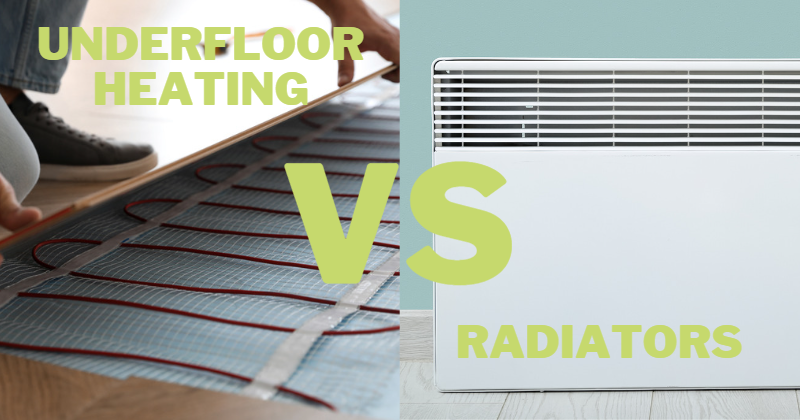

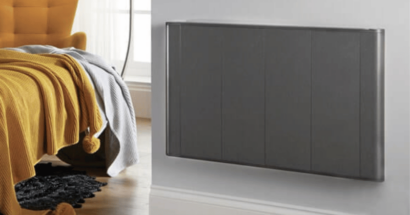
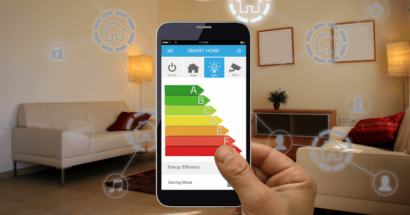

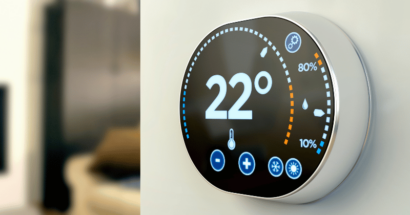



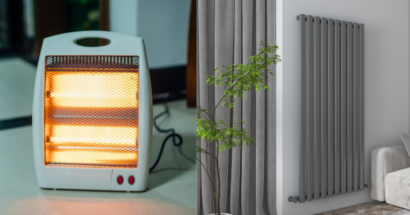

Leave a Reply